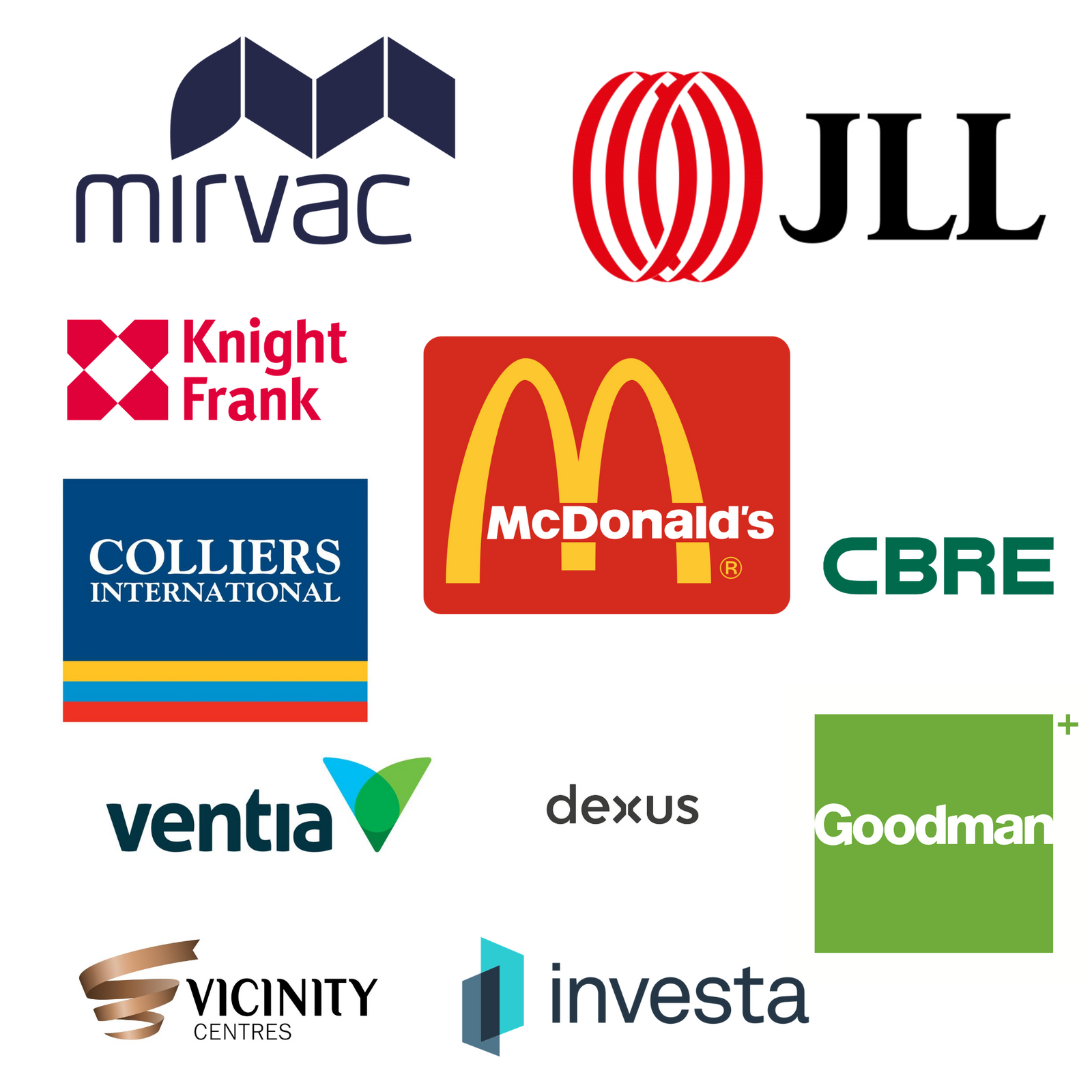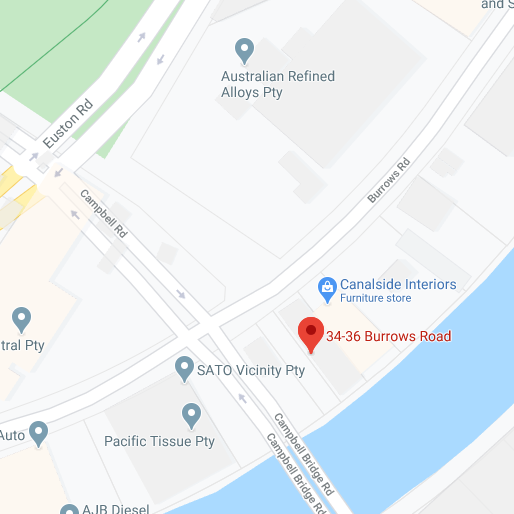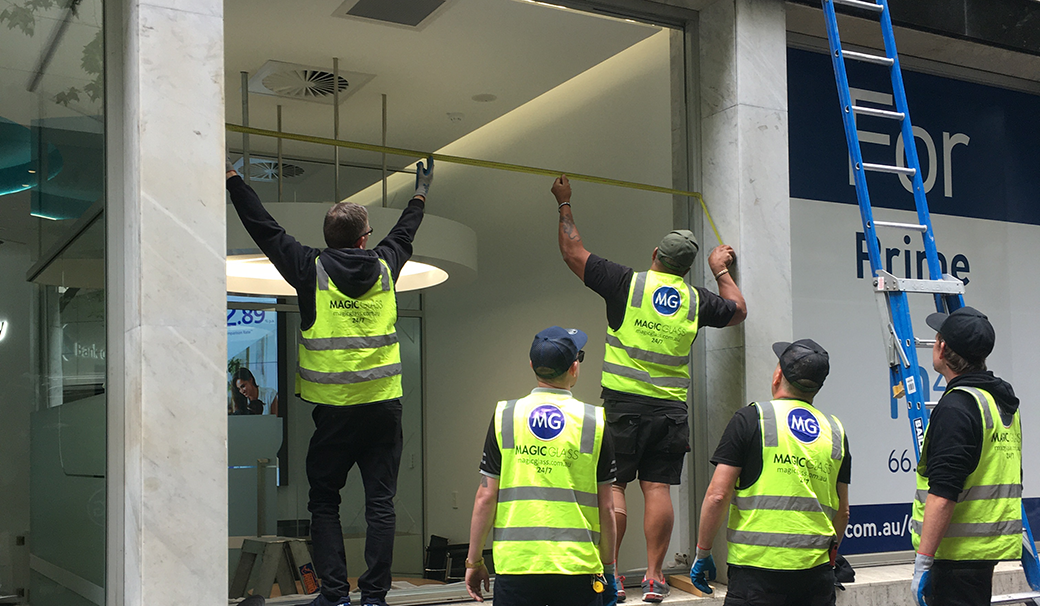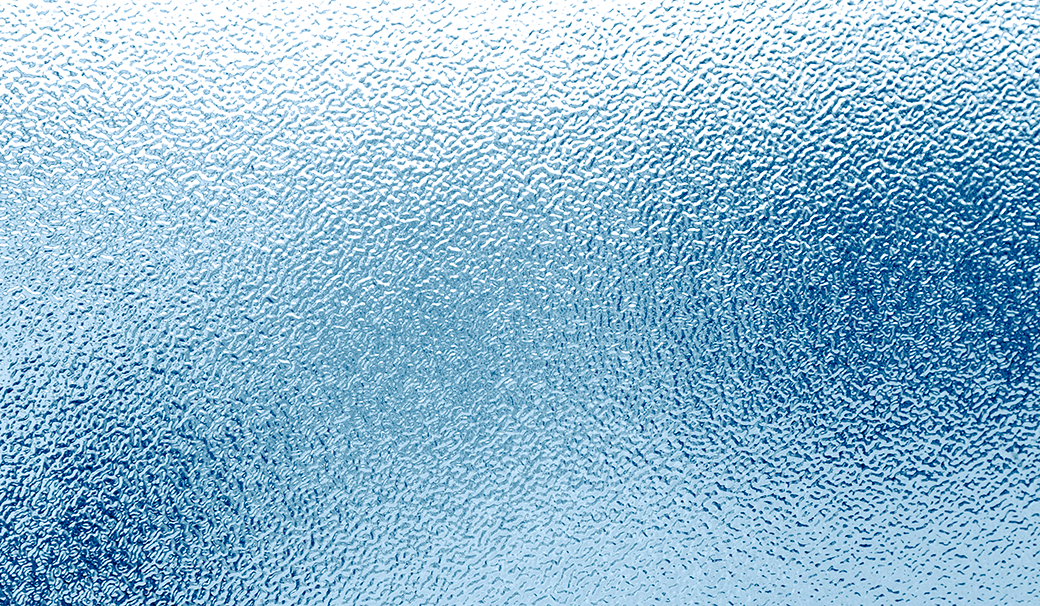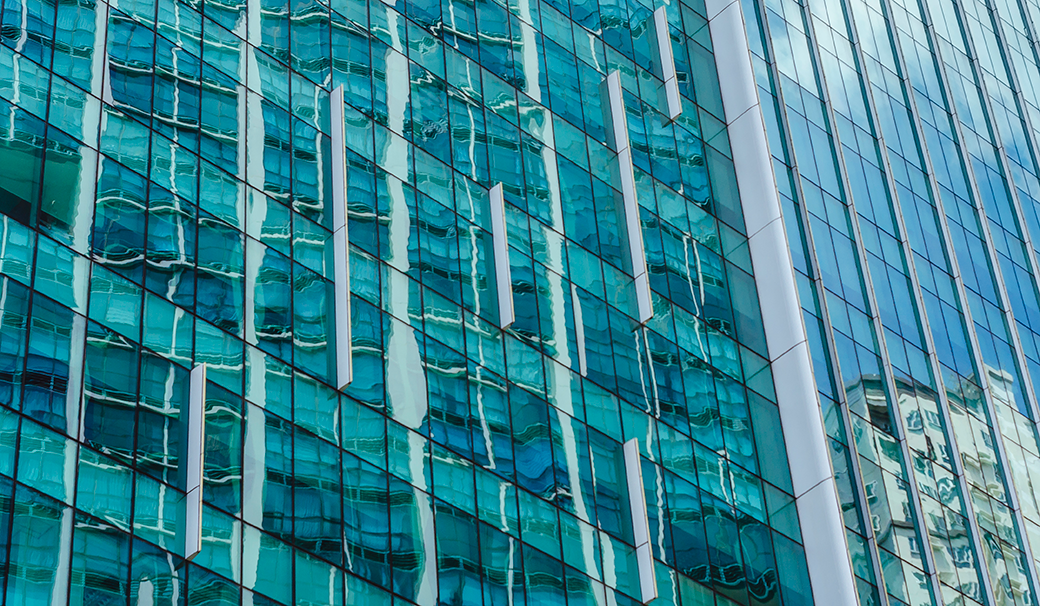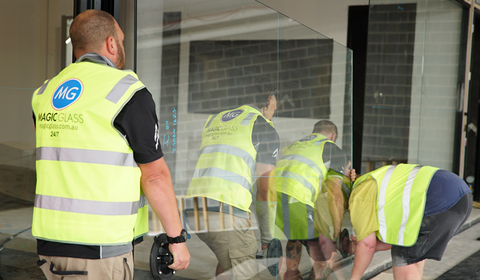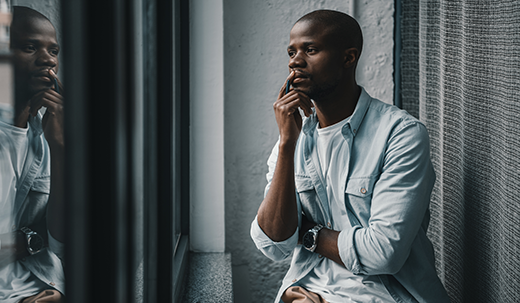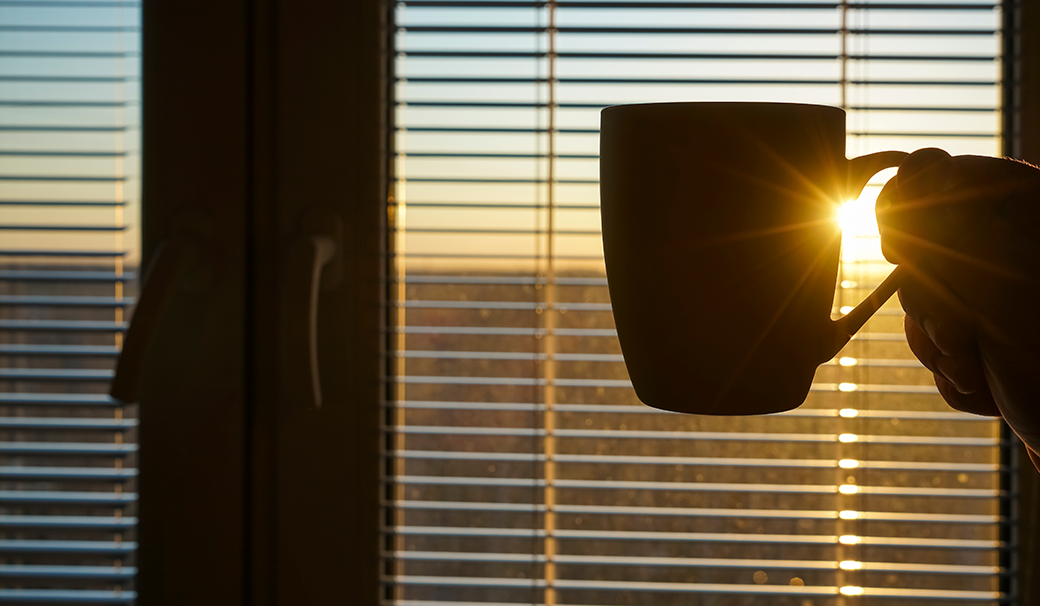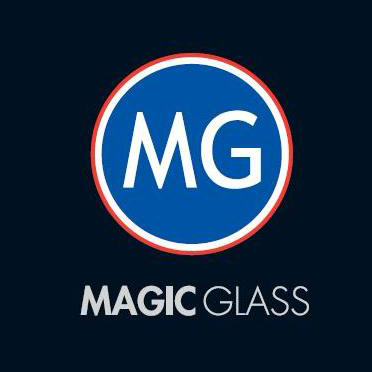Glass Blog
Regardless of the type of business you run, having a good storefront is critical in attracting customers, maximising security, and maintaining a solid business reputation.
What makes a shopfront good? Read on to find out.
Clutter-Free
No one wants to go into a store that looks cluttered and messy. Because of this, you should avoid putting too much signage and merchandise in your shopfront. Keep it relatively clear and make sure you clean it regularly.
Lighting
Making sure you have the right amount of lighting in your shopfront is also important in attracting potential customers. You want to have just enough lighting to illuminate your store and make it stand out, but not so much that it will appear overly-bright.
Security
Aside from drawing in customers, the main role of your shopfront is to keep your store secure. In order to achieve this, ensure the material your storefront is made from is strong and sturdy. If you want to install a glass shopfront, choose safety glass such as toughened or laminated glass. These glass types are significantly more resistant to force and less easy to break than standard annealed glass.
Easy to Maintain
Last but not least, for your sake, you want to ensure your shopfront is easy to clean and maintain. Select materials that stay cleaner for longer and don’t require excessive maintenance (such as glass and aluminium) over materials that get dirty quickly and require frequent touch-ups (such as timber).
If you’re wanting to install a new glass storefront in your business, call Magic Glass today. We can provide you with a free quote for a shopfront that will attract customers and keep your business safe!
Frosted glass is a type of glass that has been treated to have an opaque look on one side and a transparent or translucent look on the other.
It is made by applying a thin layer of metal, such as aluminium, to the surface of the glass. The metal is then heated and cooled in order to create the frosted effect.
The two main types of frosted glass are: wire-cut and sandblasted. Wire-cut frosting is when wires are used to cut into the surface of the glass in order to create an opaque pattern. Sandblasted frosting, on the other hand, is when abrasive material, such as sand, is blown onto the surface of the glass in order to create an opaque pattern.
Frosted glass is used to provide privacy without obstructing the view. It is often used on high-rise buildings, where the occupants of the lower floors want to be able to see out without being seen.
Frosted glass can also be used in a more decorative way, for instance as a window in the shower or bathtub. This allows natural light and air into the shower or tub while still providing some privacy for the building’s inhabitants.
If you’re looking for a way to add more sunlight into your home without compromising your building’s privacy, frosted glass is a great solution.
For any questions on frosted glass or to get a free quote, contact the Magic Glass team today.
Cladding systems are external wall systems that can be applied to the outside of buildings. They are used on both residential and commercial buildings, and offer numerous benefits including additional structural protection, noise and heat insulation, and improved aesthetics.
There are several different types of cladding, all of which have various pros and cons. Read on to find out about 6 of the most common types of cladding.
Vinyl Cladding
Due to its high durability, visual appeal, and low-cost, vinyl cladding is very popular in and around Sydney.
Made of a mix of PVC and other materials, vinyl cladding typically comes in the form of horizontally-placed panels. These panels can also be fitted with additional layers of insulation, allowing for greater thermal control within the building.
Compared to alternative cladding options, vinyl is considerably more lightweight, allowing panels to be completely flexible when covering a building. They are also available in countless colours, allowing for greater design versatility.
Timber Cladding
Timber is another popular material choice for cladding. It allows for an aesthetically pleasing finish as well as improved thermal insulation. Timber cladding is also eco-friendly and a great way for building owners to reduce their carbon footprint.
Timber cladding can, however, be costly and tricky to maintain. You’ll likely need to re-paint or re-stain your timber cladding every 3-5 years and take extra care to protect it from pests and rotting.
Stone Cladding
Stone cladding is more common for residential buildings rather than commercial buildings. It provides an elegant, luxurious finish for homes and is easy to maintain and highly effective in preventing moisture from getting in.
The main drawback of stone cladding is that it can be extremely expensive. Both material costs and labour/installation costs are very high.
Metal Cladding
Metal cladding, particularly aluminium cladding, is another very popular choice in Sydney. It provides a shiny and contemporary look for both residential and commercial buildings.
Metal cladding is popular because it’s versatile, easy to work with, lightweight, low-maintenance, cost-effective, and energy efficient. It is, however, susceptible to denting and is a poor sound insulator.
Brick Cladding
Brick cladding is another great option for adding a stylish touch to your building’s exterior. It is highly versatile when it comes to design, allowing for colour and textural customisation.
As brick is a very sturdy material, it provides a high level of protection against the elements and is very easy to maintain.
The installation of brick cladding can incur high labour costs, however, so it is one of the more expensive cladding options.
Glass Cladding
Last but not least, we have glass cladding. This type of cladding is most commonly used on commercial buildings to boost aesthetics and provide a modern and unique feel. It is also a great thermal insulator, requires little maintenance, and is capable of withstanding harsh weather conditions.
Glass cladding can, however, be expensive to install and clean, and is unsuitable for earthquake-prone areas.
For all your cladding installation, replacement, and maintenance needs, get in touch with Magic Glass. Our dedicated Rope Access Division can offer cost-effective and discrete cladding services for all buildings of all heights.
- Architectural Glass Solutions
- Building Maintenance
- Commercial Glass Installation
- Commercial Glass Replacement
- Commercial Glass Services
- Commercial Glazing
- Custom Glass
- Facade Services
- Glass Installation
- Glass Projects
- Glass Solutions
- Hi-Rise Glass
- High Rise Glass Services
- Rope Access
- Sydney Glass Company
If you’re planning on installing a glass fence around your pool, an important decision you’ll have to make is whether you want to get framed or frameless fencing.
Both have their pros and cons, so having a solid understanding of both fencing types will help you determine which is best for you and your needs.
Frameless Glass Fencing
As the name suggests, frameless glass pool fencing is composed of sheets of glass held in place at the bottom rather than by an entire frame around the panel. This type of fencing must be made from safety glass, so it is highly strong and durable, and significantly less likely to cause injury in the rare event of breakage.
Frameless glass pool fencing is becoming more and more popular in Australia. As it gives the illusion that there is no fence at all, many people choose frameless fencing as it is more aesthetic and does not obstruct the view of their outdoor area. Frameless glass fencing also allows for greater visibility of the pool, so it is easier to supervise children and pets.
The main drawback of frameless glass fencing, however, is that it is generally more expensive than framed options. This is because the glass panels are secured to the ground either with cement or highly-durable stainless steel spigots, which incurs greater labour, equipment, and material costs.
In addition, the glass panels in frameless fences need to be either toughened or laminated safety glass. So glazing costs are likely to be higher too.
Framed Glass Fencing
Most types of framed glass pool fences these days are semi-framed. This means that rather than the entire panel being framed, there is framing only in the space that connects two glass panels together, with the top and bottom of the glass being left clear.
This type of pool fencing provides many of the same benefits of frameless fencing. There is slightly more view obstruction, however, and potentially more maintenance requirements.
One of the main advantages of semi-framed glass fencing is that it is notably cheaper than frameless fencing. Semi-framed pool fences can be up to 30% cheaper than frameless pool fencing, making it the ideal choice for lower budgets.
Both types of pool fencing are very durable and relatively low-maintenance. Determining which is best for you will ultimately come down to your personal preference and budget.
For more information, call Magic Glass. We will be able to find the perfect glass fencing for your pool, ensuring all Australian Pool Safety Standards are met.
Safety glass is a type of glass that is designed to be less likely to break and less likely to inflict serious injury in the rare event it does break. The two main types of safety glass include toughened (or tempered) glass and laminated glass.
One of the most common questions we get asked is ‘which type of glass is the safest?’ Although toughened glass is most commonly recommended for safety, it does ultimately come down to what it is being used for.
Toughened Glass
Toughened glass is manufactured through the use of thermally or chemically controlled treatment processes. It is these processes that strengthen the glass and make it more resistant to force.
Although it is very difficult to break toughened glass, it’s not impossible. In the rare event breakage does occur, toughened glass shatters into many smaller pieces rather than large, sharp shards of glass. Because of this property, it is much safer than standard, annealed glass and is significantly less likely to inflict injury. This is why toughened glass is often used in motor vehicle windows and diving masks.
Toughened glass is also Grade A safety glass and is therefore frequently used in areas and spaces where compliance with Australian Glass Safety Standards is a must. This includes schools, hospitals, low-level glazing, aged care facilities, and child care centres.
Laminated Glass
Laminated glass is composed of two pieces of glass with an interlayer commonly made from polyvinyl butyral. This prevents the glass pieces from shattering as they remain stuck to the interlayer rather than breaking off into sharp shards.
As laminated glass sticks together even when it is shattered, it provides much greater security against potential break-ins, severe weather, and sudden impact. Because of this, laminated glass is most commonly used in shopfronts, windows and doors, balustrades, and glass fencing.
If you’re wanting to install safety glass into your commercial or residential building and are still unsure which type is best for you, give Magic Glass a call! Our friendly team will be able to provide you with recommendations and point you in the right direction when it comes to installation.
We can also provide you with a free quote for custom safety glass fabrication and installation.
When it comes to reducing noise pollution, many people choose to install soundproof glass into their windows and doors. Before doing this, however, it is important to weigh-up your options as there are different types of soundproof glass, all of which have various pros and cons.
The two main types of soundproof glass are double-glazed and laminated glass.
Double-glazed glass is simply glass panels that have two panes instead of one. The space between the two panes is filled with either air or argon to further insulate the panel.
The pros of double-glazed glass is that it’s very energy efficient, weather resistant and soundproof. The main con, however, is that it can be expensive to double-glaze your windows.
Laminated glass is similar to double-glazed glass in that it is manufactured using two panes. The space between these panes is filled with PVB (polyvinyl butyral), a type of resin that is highly effective in blocking out sound.
Similarly to double-glazed glass, laminated glass is energy efficient, weather resistant and soundproof. It’s also effective in blocking out UV rays.
Laminated glass is challenging to install, however. Not installing it properly will result in it being less effective in both thermal control and soundproofing.
Both types of glazing have similar STC (Sound Transmission Class) ratings, so what it ultimately comes down to is price and convenience. Laminated glass is cheaper, however there are challenges with installation so you should always seek the help of a glazing professional.
If you’re wanting to further soundproof your building, get in touch with the Magic Glass team today. We can custom-make and install both double-glazed and laminated glass panels that will aid significantly in blocking external sound.
- Commercial Glass Installation
- Commercial Glass Replacement
- Commercial Glass Services
- Custom Cut Glass
- Custom Glass
- Custom Glass Installation
- Double Glazed Windows
- Energy Efficient
- Glass Cut to Size
- Glass for Home
- Glass Installation
- Glass Pane
- Glass Replacement
- Glass Services
- Glass Solutions
- Glass Walls
- Laminated Glass
- Office Space
- Shopfront
- Toughened Glass
- Window Services
The use of Low-E coated glass has been a game changer in boosting the energy efficiency of buildings. With an estimated 70% of energy loss occurring through windows and doors, and 90% of window energy loss occurring through the glass, Low-E coatings have helped drastically in keeping heat in or out of commercial buildings and houses.
What is Low-E Glass?
Low-E (or low-emissivity) glass is designed to minimise the amount of infrared and UV radiation absorbed by glass, without reducing the amount of light entering the building.
The glass has a very thin, transparent coating that reflects heat back inside or outside the building. This helps keep the temperature in your building consistent by reflecting the internal temperature back inside.
Types of Low-E Coatings
There are two different types of Low-E coatings. Which one is best for you is based predominantly on your area’s climate.
Hard-Coat (Passive) Low-E Coatings
Hard-coat Low-E coatings are applied to glass immediately after it is removed from the furnace. The heat causes the coating to fuse onto the glass as it is cooling down. The fusion creates a strong bond (or hard-coat) that is highly durable.
Hard-coat Low-E glass is used predominantly in climates where the temperature can get extremely low. This is because the hard-coat glass allows some of the sun’s short-wave infrared energy to pass through, whilst keeping the long-wave heat energy inside. This keeps buildings nice and warm when it is cold outside.
Soft-Coat (Solar Control) Low-E Coatings
Soft-coat Low-E coatings are applied to pre-cut glass in a vacuum chamber once the glass has cooled. This type of coating must be sealed in an insulated glazing unit (IGU) or laminated glass unit for longevity and optimal performance.
Soft-coat Low-E glass has lower emissivity and higher solar control performance. It has better UV protection and is overall more effective. For this reason, it is ideal for use in cold to hot climates where it can reflect the warm or cool air back into your building, with minimal leakage outside.
Installing Low-E glass into your home or business can significantly improve your building’s energy efficiency, in turn reducing your carbon footprint and saving you money. It can also prevent damage to your furniture and internal decor by blocking out harmful UV rays.
If you’re considering upgrading to Low E glass, contact the Magic Glass team today! We can provide you with a free quote and help advise you on what options are best for your building.
- Commercial Glass Replacement
- Commercial Glass Services
- Custom Glass
- Custom Glass Installation
- Energy Efficient
- Glass Company
- Glass for Home
- Glass Options
- Glass Replacement
- Glass Services
- Glass Solutions
- Glass Window Replacement
- Glazing Services
- Residential and Commercial
- Sydney Glass Company
- Window Replacement Service
- Window Services



